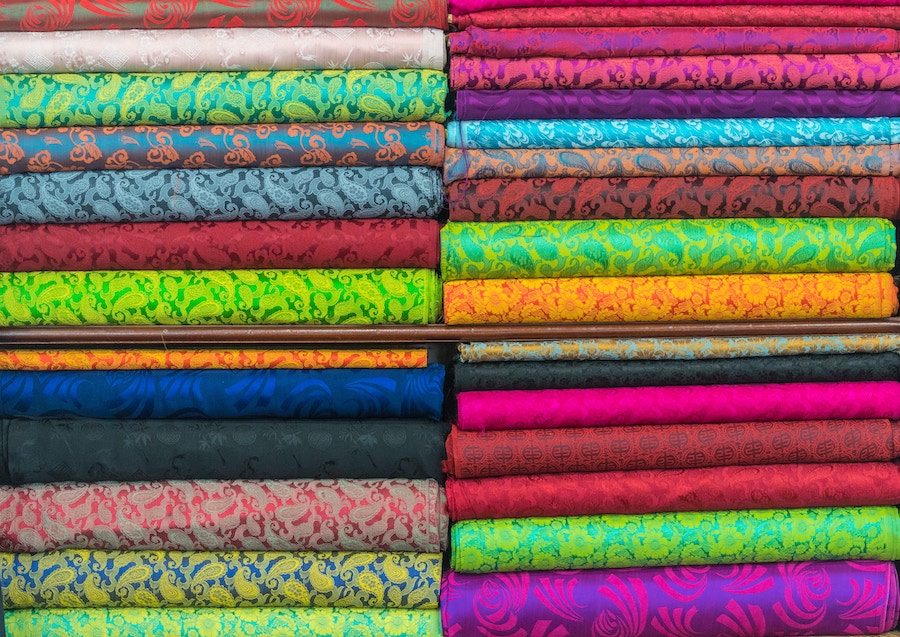Every day, we humans drape our bodies in fabric. We give rather little thought to the contents of those materials, or the massive innovation that’s enabled us to clad ourselves in stretchy, water-repellent, low-cost, and even odor-resistant comfort.
Subscribe to the Crunchbase Daily
But each year, whether we’re paying attention or not, the materials we wear are getting smarter. Our t-shirts stink less at the end of the day. Our sneakers withstand puddles. And the toil, toxicity and environmental degradation associated with producing the stuff we wear is at least potentially poised to diminish.
Startups drive a lot of the innovation in the fabric space, so Crunchbase News decided to take a look at what they’ve been up to lately. As it turns out, it’s quite a lot.
An investment data dive turned up dozens of fabric-focused startups funded in the past three years. Collectively they’ve brought in more than $600 million to shake up fashion, bedding, and athletic-wear with materials that are more ethically sourced, higher performance, and cooler.
It takes a while for something out of a startup lab to make its way to your shopping cart. But in an effort to see what your future closet might look like, we’ve aggregated a few of the top trends below, from recyclables to fungus-based leather to clothes that cool you down.
“I Like Your Polyester Shirt.”
“Thank You, It’s Recyclable.”
One of the biggest themes in fabric startup investment is around eco-friendly versions of popular materials. This revolves around two strategies in particular: recycled fabrics and biodegradable versions of common synthetics.
We’ve put together a chart with a few startups active in these areas below. It’s worth noting that most funded companies are relatively early stage, so it’s likely we’ll see larger rounds in coming quarters:

On the surface, biodegradable and recyclable fabric seems like an easy sell. Take polyester. It’s the most popular synthetic material in the world. That’s perhaps in large part because we don’t much talk about how it’s made.
But those much-worn wrinkle resistant shirts are actually a petroleum product. And polyester, a polymer made of petroleum, coal, and water, consumes roughly 70 million barrels of oil each year for global production. It’s pretty hard to get rid of too – with estimates that our out-of-style garb could take a couple hundred years to decompose.
Cotton, the “natural choice” is a far from perfect alternative too, with is weighty water consumption requirements and use of agricultural land that might otherwise go to food crops. Finding better ways to reuse existing cloth seems like a compelling option.
Yet while more sustainable versions of popular fabrics are available, making them cost-competitive remains a challenge, said Karla Mora, managing partner at Alante Capital, a venture fund that makes socially-conscious investments in the textile and apparel space.
“The way we work with brands is to try to find out what kinds of innovations can improve sustainability and also compete on price,” she said. “So it’s not something for only the wealthy.”
That said, Mora said early rollouts of recyclable cotton and biodegradable polyesters and cotton materials largely come from higher margin brands. Once this use of the fabrics reaches larger scale, however, the expectation is they’ll expand to lower cost labels.
“I Like Your Leather Sofa.”
“Thank you. It’s Made Out Of Mushrooms.”
While some startups are working to make existing fabrics more eco-friendly, others are spinning up entirely new types of cloth.
In the chart below, we look at a few of the funded companies that are deploying new materials or underutilized organic sources in their fabrics:

Here, the most heavily-funded player is Bolt Threads, which has raised $213 million to date to develop and commercialize new materials, including a Microsilk, a bio-engineered silk spun from the same proteins as a spider’s web, and Mylo, a leather substitute made from mycelium, the branching underground structure of mushrooms.
Modern Meadow is the other heavyweight. The Brooklyn company has raised more than $50 million to date to build novel bio-fabricated materials. It’s first demo product Zoa, a leather-like material made from engineered collagen protein, is not yet commercially available.
“Turn Up The Air Conditioning.”
“No, Try This Shirt.”
Performance fabrics are also getting some attention from venture investors.
Products that startups are cooking up include new fabric treatments to add antiseptic properties, techniques to discreetly add sensors to wearable, and even clothes that help wearers cool down in hot temps.
In the chart below, we look at some of the top funding recipients:

Tying Up Loose Ends
While a lot of money has gone into the fabric space in the past few years, it’s yet to generate outsize exits. This isn’t surprising, as many of the players are still early stage, and even the most heavily funded have only begun selling their wares.
Looking ahead, it’ll be exciting to see the extent to which these newer, more sustainable, more heavily-bioengineered materials make their way into our wardrobes.
Photo by Rod Long via Unsplash.

Stay up to date with recent funding rounds, acquisitions, and more with the Crunchbase Daily.





![Illustration of a guy watering plants with a blocked hose - Global [Dom Guzman]](https://news.crunchbase.com/wp-content/uploads/quarterly-global-3-300x168.jpg)
67.1K Followers